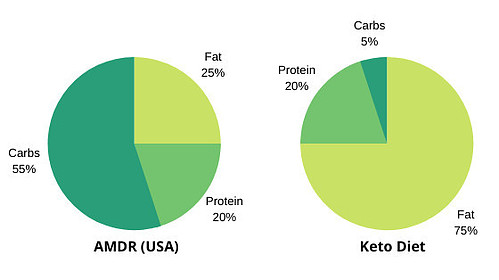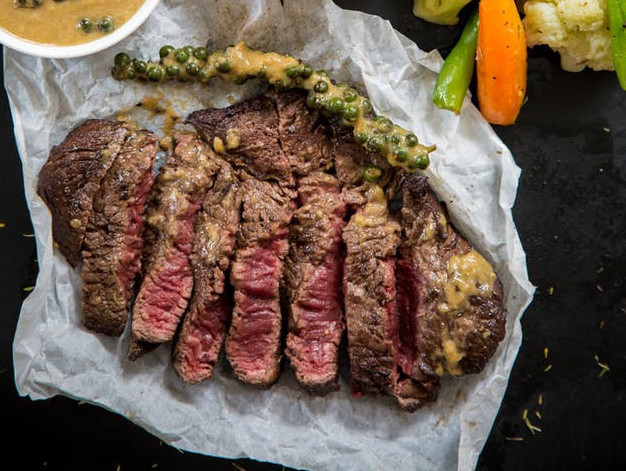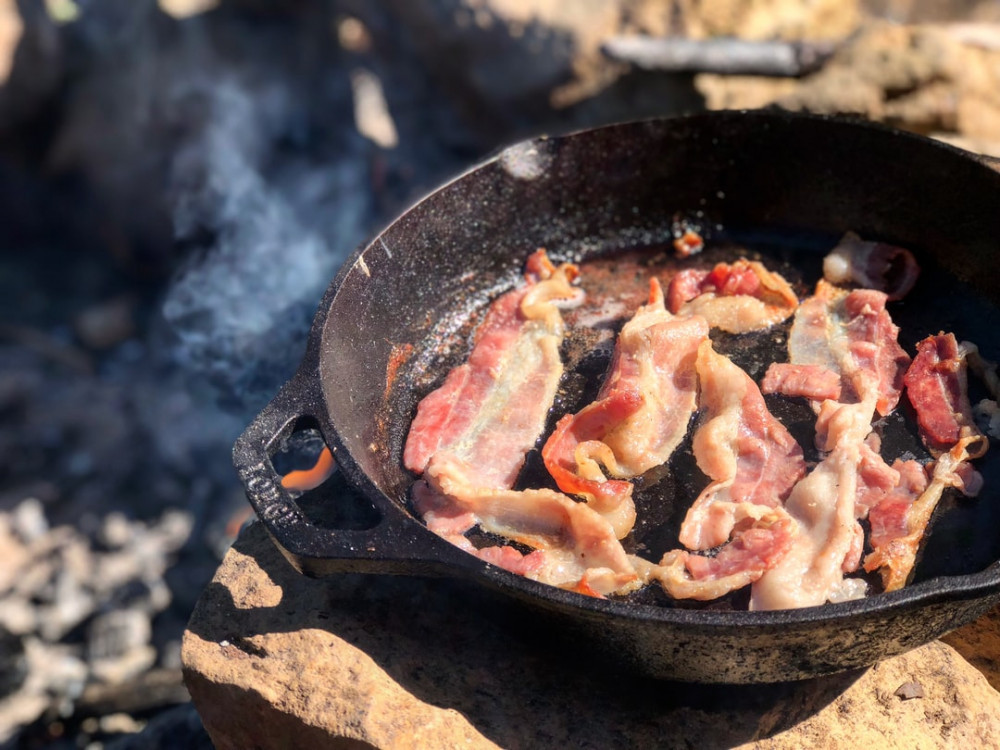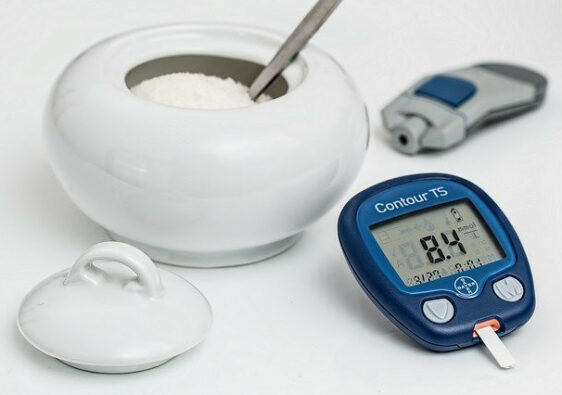To stay in ketosis, you need the right ratio of carbohydrates, fats and protein. Find out here the maximum amount of carbohydrates you can eat to get into ketosis.

To get into the state of ketosis, you need the right ratio of carbohydrates, fats and protein.
This leads to a frequently asked question: How many carbohydrates can you eat in a keto diet?
With a standard Western diet, you can eat between 100 and 150 carbohydrates per day and still be considered low carbohydrate or low carb. Unfortunately, this will not put your body into a fat-burning state of ketosis.
With a ketogenic diet, your carbohydrate intake will be much lower, often between 25 and 50 grams of carbohydrate per day.
Below you will learn how many carbohydrates most people consume in a keto diet, why your macro goals can vary, and how to calculate your carbohydrate, protein and fat intake.
You will also learn about some healthy carbohydrate sources that you should consider for your keto diet.
How Many Carbohydrates Should You Eat on Keto?
As we know, the keto diet is a low carb, high-fat diet. The goal of keto nutrition is to reach a metabolic state called ketosis, in which you burn ketone bodies – instead of glucose – as your primary source of energy.
In the keto diet, most people consume 70-75% of their daily calories from fat, 20-25% of calories from protein and only 5-10% of calories from net carbohydrates. This is a rough estimate – your individual macro nutrient goals depend on your age, body composition, activity level and weight loss goals.
How To Calculate Daily Carbohydrate Intake
To better understand your daily carbohydrate intake in a ketogenic diet, take the above percentages and transfer them into grams (which is much more useful when reading the nutritional labels).
For example, if you eat 2,000 calories a day and only want to get 10% of your calories from carbohydrates, multiply 2,000 by 0.10 to get 200 calories a day. Since one gram of carbohydrate equals four calories, you take 200 divided by 4 to get 50 grams of net carbohydrate per day.
How To Calculate Daily Protein Intake
Protein is very beneficial to your body as it provides amino acids that help build muscle mass and burn body fat.
With keto, about 20-25% of your calories come from protein. If you are an extremely active person, you may need a little more protein – but be careful, too much protein can cause gluconeogenesis.
Depending on your activity level, most people consume between 1 and 2.2 grams of protein per kilogram of lean body mass. For example, a woman can weigh 70 kg, but has only 50 kg lean body mass. For her 50-110 grams of protein per day would be suitable.
For more info about how much protein you should eat on a keto diet, check out my article here.
How To Calculate Daily Fat Intake
One of the main errors in keto is not eating enough fat.
For a very long time, nutritionists declared that fat – especially saturated fats – was bad, which led to the low-fat cooking trend of the 1980s and 1990s. However, this science has since been debunked, as there is no significant data showing a link between a high-fat diet and an increased risk of heart disease.
Once you have calculated your protein and total carbohydrates, your remaining calories of the day will come from healthy sources of fat. As mentioned above, these are typically 70-75% of the total calories of the day.
To give you an idea, 70% of 2,000 calories is equivalent to 1,400 calories. If you divide 1,400 by 9 (as one gram of fat is equivalent to 9 calories), you will get 155.56 grams of fat per day.
(Want to start the keto diet? Download the free Keto Diet Food List PDF to get a complete overview of all the foods you can eat and which you must avoid to reach ketosis. Find out more here!)
Targeted Keto Diet and Carbohydrate Intake
If you train regularly and engage in intensive physical activity, note that the above conditions may not meet your performance requirements. This is where the Targeted Ketogenic Diet comes in.
With the Targeted Ketogenic Diet, you should include a carbohydrate “boost” before and immediately after training sessions (but only during training periods). This will ensure that your muscles have enough glycogen to perform their necessary tasks both during competition and training.
When you use this targeted keto principle, you will normally follow the macro guidelines above throughout the day. However, after you leave the gym (or finish your training session), you will ingest 15-30 grams of fast-acting carbohydrates. These should be consumed within half an hour of the end of your workout.
In theory, your body uses these carbohydrates immediately to repair and regenerate itself. Therefore, your ketogenic state is not adversely affected and you will not be thrown out of ketosis.
Carbohydrate-Rich Food for the Keto Diet
With a keto diet plan, you eat plenty of healthy fats and high quality protein sources. You get most of your calories from foods such as olive oil, coconut oil, avocados and MCT oil, and proteins come mostly from both plant and animal sources.
When it comes to carbohydrates for keto, you should control your blood sugar levels by eating certain foods that have a low glycemic index.
The glycemic index classifies foods from 0 to 100, with higher numbers causing a higher increase in insulin levels. Avoid carbohydrate-rich grains, starchy vegetables and sugary fruits, and instead build your diet on keto-friendly and low-carbohydrate foods, such as:
- Green leafy vegetables, including kale, lettuce, asparagus and rocket
- Berries with low sugar content, including blueberries, strawberries and raspberries
- Cruciferous vegetables, including cabbage, cauliflower, Brussels sprouts and broccoli
With a low carbohydrate diet, you will also want to avoid all sugars, including lemonade, sweets, baked goods and even sugar alcohols.
If you crave something sweet, use a keto-friendly sweetener like stevia, monk’s fruit or erythritol. Here is some more info about natural, keto-friendly sugar alternatives.
Test the Ketone Levels Regularly
The best way to find out how many carbohydrates you should consume with keto is to test your ketone level in your urine or blood. See this guide to testing ketone levels for more information.
Remember, the goal of the keto diet is to get into ketosis.
Even if you lose weight, feel great, and see improvements in your body composition, there is a chance that you are not in ketosis.
The only way to find out if your current diet still contains too many carbohydrates to achieve your goals is to test your ketone levels – especially at the beginning of a ketogenic diet.
Conclusion
In a ketogenic diet, your goal is to enter the state of fat burning, which is called ketosis. To achieve this, stick to a high-fat, low-carbohydrate diet where your daily carbohydrate intake varies between 25 and 50 grams.
However, the amount of carbohydrate in keto varies from person to person. Your carbohydrate intake may be higher or lower than average, depending on your genetics, body composition and training routine.
Now that you know how much carbohydrate you should consume in a keto diet based on your calorie intake, the rest is up to you. In our Keto Starter course, you’ll find plenty of low carbohydrate recipe ideas, instructions, diet plans, and tips & tricks to help you get (and stay) on the ketosis fast.
Thanks for reading,
Anna
www.readyforketo.com







